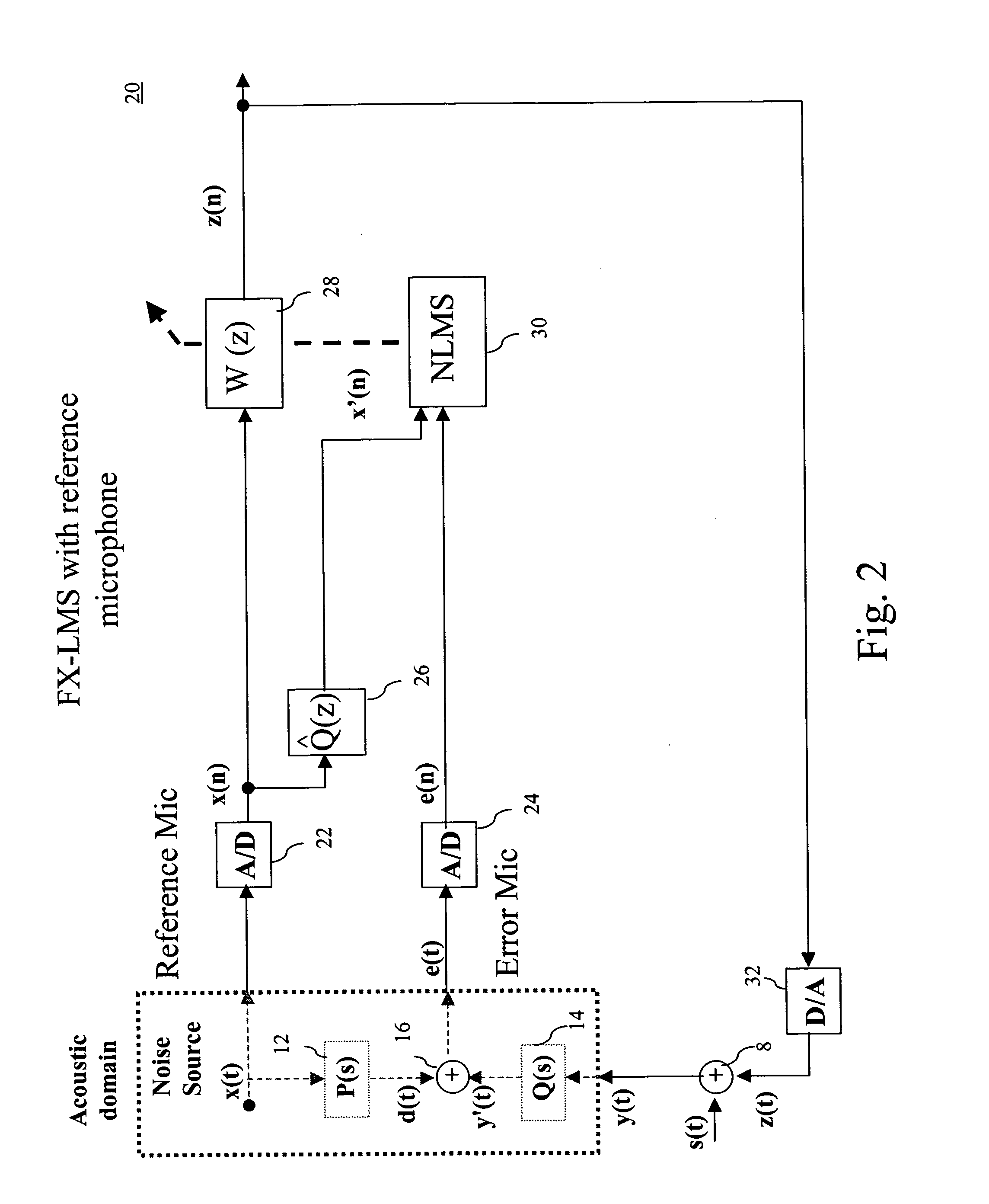Method and system for active noise cancellation
a technology of active noise cancellation and signal processing, applied in the field of signal processing and modeling technique, can solve the problems of low noise cancellation degree, prone to acoustic feedback, and inability to provide as high a degree of cancellation
- Summary
- Abstract
- Description
- Claims
- Application Information
AI Technical Summary
Benefits of technology
Problems solved by technology
Method used
Image
Examples
Embodiment Construction
[0068] The embodiments of the present invention are described for a headset. However, the embodiments of the present invention are applicable to any other listening devices, such as portable listening devices. The embodiments of the present invention are described mostly for active noise cancellation and echo cancellation. However, the embodiments of the present invention can be employed for other applications, including adaptive noise cancellation.
[0069] The embodiments of the present invention relate to over-sampled subband adaptive filtering using specialized DSP techniques and analog ANC techniques. Thus, DSPs are relevant to the technology disclosed below. Because the applications of these techniques are in listening devices and the cancellation relies on acoustic summation, the embodiments of the present invention relates to acoustics.
[0070]FIG. 1(a) illustrates a conventional analog ANC system 2 for a headset. As shown in FIG. 1(a), a primary noise signal x(t) is sensed by ...
PUM
 Login to View More
Login to View More Abstract
Description
Claims
Application Information
 Login to View More
Login to View More - R&D
- Intellectual Property
- Life Sciences
- Materials
- Tech Scout
- Unparalleled Data Quality
- Higher Quality Content
- 60% Fewer Hallucinations
Browse by: Latest US Patents, China's latest patents, Technical Efficacy Thesaurus, Application Domain, Technology Topic, Popular Technical Reports.
© 2025 PatSnap. All rights reserved.Legal|Privacy policy|Modern Slavery Act Transparency Statement|Sitemap|About US| Contact US: help@patsnap.com



